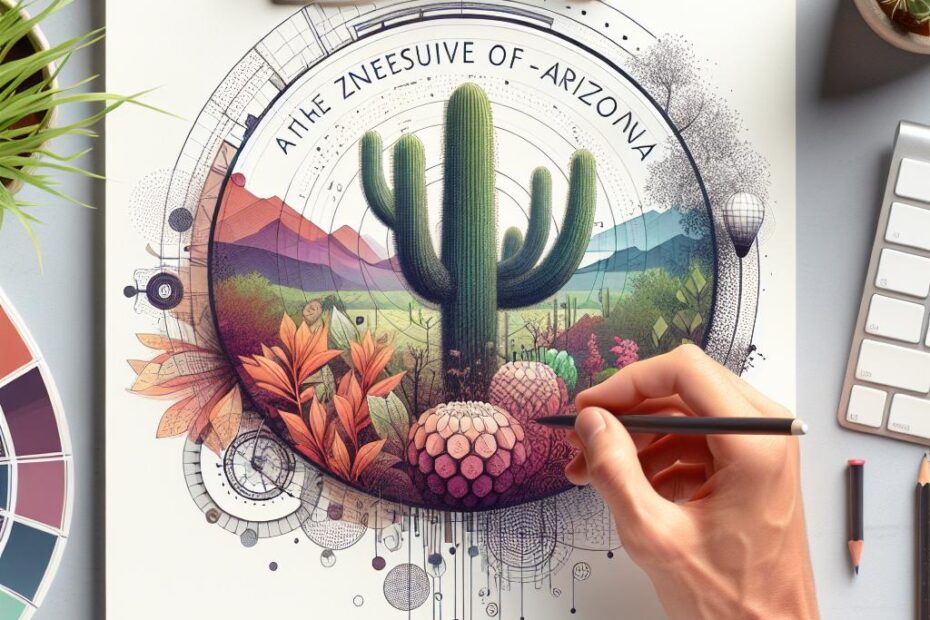Arizona is a state with diverse landscapes and climates, ranging from arid deserts to lush forests. This variety of environments results in a wide range of plant life that can thrive in different zones throughout the state. Understanding what zone Arizona is for plants is crucial for successful gardening and landscaping in this unique region.
Arizona is primarily located in USDA Hardiness Zones 7 through 10. These zones are determined based on the average annual minimum winter temperatures in a given area. Here is a breakdown of the zones in Arizona:
-
Zone 7: This zone covers the northern part of Arizona, including areas such as Flagstaff and the Grand Canyon. Winter temperatures in Zone 7 can dip as low as 0 to 10 degrees Fahrenheit. Plants that are suitable for Zone 7 include cold-hardy varieties such as junipers, pines, and spruces.
-
Zone 8: Zone 8 includes central Arizona, including cities like Phoenix and Tucson. Winter temperatures in Zone 8 typically range from 10 to 20 degrees Fahrenheit. Plants that do well in this zone include cacti, succulents, and drought-tolerant species like desert marigold and brittlebush.
-
Zone 9: Southern Arizona falls into Zone 9, where winter temperatures stay between 20 to 30 degrees Fahrenheit. This zone is ideal for warm-season plants like citrus trees, bougainvillea, and agave.
-
Zone 10: Zone 10 covers the southwest corner of Arizona, including Yuma and Lake Havasu City. Winter temperatures in Zone 10 rarely drop below 30 degrees Fahrenheit, making it suitable for tropical plants like palms, hibiscus, and oleander.
It’s important to note that microclimates can affect plant growth within these zones. Factors such as elevation, slope, and proximity to buildings can create variations in temperature and moisture levels that may impact plant health. When planning your garden or landscape design, consider these microclimates to ensure the best chances of success for your plants.
Benefits and Practical Tips:
- Choose native plants: Native plants are well-adapted to the climate and soil conditions of Arizona, making them more likely to thrive with less maintenance.
- Mulch: Mulching around plants helps retain moisture in the soil, regulate temperature, and reduce weed growth.
- Water wisely: Arizona is a desert state with limited water resources, so it’s essential to use water-efficient irrigation methods and plant drought-tolerant species.
- Monitor soil pH: Test your soil and adjust the pH if necessary to ensure optimal nutrient uptake by your plants.
- Consider sun exposure: Arizona is known for its intense sunlight, so plan your garden layout to provide shade for sensitive plants during the hottest part of the day.
Case Study:
A homeowner in Phoenix, Arizona, wanted to create a low-maintenance desert landscape in their backyard. By choosing native succulents and cacti suited for Zone 8, they were able to design a beautiful garden that thrived in the arid climate. Incorporating rocks and gravel as mulch helped conserve water and reduce weed growth, while a drip irrigation system ensured effective watering without wastage.
First-Hand Experience:
As a resident of Tucson, Arizona, I have learned through trial and error which plants thrive in my Zone 9 garden. By experimenting with different species and adjusting my watering schedule to match the desert climate, I have created a sustainable and vibrant landscape that enhances the beauty of my home.
In conclusion, understanding what zone Arizona is for plants is essential for successful gardening and landscaping in this diverse state. By selecting plant species well-suited to your specific zone and considering microclimates, you can create a beautiful and sustainable outdoor space that thrives in the unique climate of Arizona. Remember to choose native plants, water wisely, and create a design that takes advantage of the abundant sunlight for a flourishing garden that requires minimal maintenance.
